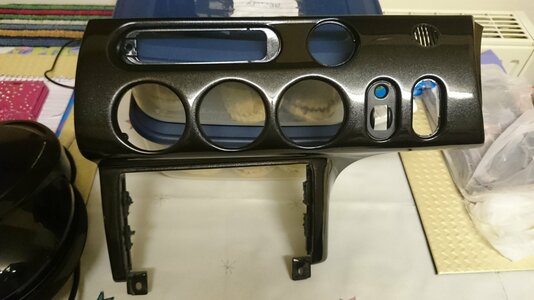A bit more on the 'Traction Control' issue. From the Ford Cougar Workshop Manual,
Cougar 1999 (08.1998-01.2001) :-
The anti-lock control - anti-wheelspin control is an expanded version of the anti-lock brake system. The system is integrated with the anti-lock brake system and uses the same wheel speed sensors and similar hydraulic control unit.
The hydraulic control unit has additional internal solenoid valves incorporated to enable control modulation of the wheel brake pressures.
The system works by transferring torque from the spinning wheel(s) to the wheel(s) with the most traction. This torque transfer is achieved by the hydraulic control unit applying the relevant brake(s).
The system is only active at road speeds up to 85 km/h (53 mph). When the system is active the driver is made aware of the fact by the illumination of a warning indicator located in the instrument cluster.
Anti-wheelspin control, after a road speed of 85 km/h (53 mph) is controlled by a combination of fuel and spark adjustment using the vehicle engine management system. 2.0L - For additional information, refer to Section 303-14A Electronic Engine Controls / 303-14B Electronic Engine Controls. 2.5L - For additional information, refer to Section 303-14A Electronic Engine Controls / 303-14B Electronic Engine Controls.
Here is a link to that page :-
http://workshop-manuals.com/ford/co...operation/anti-lock_control_traction_control/
Unfortunately, I cannot seem to find the two sections referenced at the end of the article. But it is interesting to note that there are two 'modes' of 'Anti-wheelspin control'; below 53mph using the ABS unit and above 53mph using 'spark and fuel adjustment' via the ECU. Of course, this means the ABS unit is applying the brakes for us ! ( all a bit weird ) However, just to be clear, as I hope I was in my original post, as to what is fact and what is speculation - I
assume that rather than any kind of crude disabling of all or part of the ignition system, that would surely invite misfiring / backfiring from the wasted unburnt fuel, that existing engine control methods within the ECU / PCM, such as ignition advance / retard and injector pulse timing / length, would be used to provide the reduction in engine output.
I would be most interested in seeing the relevant parts of 303-14A Electronic Engine Controls / 303-14B Electronic Engine Controls, if anyone has them. Also, why all the (s) in the description, as that would only apply to AWD ? Presumably this was still a generic text ?
Also, if you can get past the first few annoying paragraphs, there are some interesting snippits in here ( handful of salt would be useful ) :-
https://en.wikipedia.org/wiki/Traction_control_system
As for the lines in the 'Users manual', I assume the Ford sales team had done their magic on this, as it varies between the obvious and the counter intuitive...

